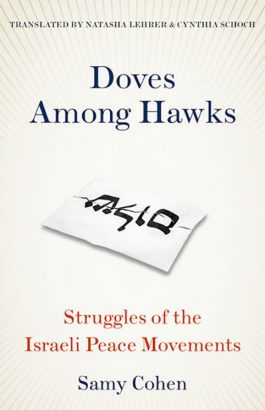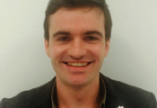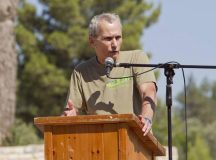Plays tend to have three acts. In his excellent and very timely ‘Doves Among Hawks: Struggles of the Israeli Peace Movements’, Samy Cohen has written a compelling account not only of the nebulous constellation of NGOs, individuals and movements that make up Israel’s beleaguered ‘peace camp.’ But of the larger question of what sort of country Israel is to be, and which of its values — so often in tension — will ultimately prevail in a possibly imminent third act where the peace movements, even if just by their continued relative weakness, may play a determining role.
Cohen, who is a Professor Emeritus at Sciences Po, Paris, has chosen a topic that has long deserved such close and rigorous examination. The Israeli peace camp, as distinct from the Zionist parliamentary Left which it once blazed a trail for, but more often sluggishly followed, has been at the vanguard of some of the most seismic political events in the state’s history. Yet, its role in these events tends to be relegated to a footnote beneath the more dominant political narrative. By gathering and then exponentially expanding these footnotes and telling the story of Israel with civil society placed at the very centre of events, Cohen has contributed something genuinely new to the crowded field of books on Israel’s short history.
In providing a framework drawn from social movement theory, with four distinct clusters for understanding these divergent movements, the author draws a clarifying prism for an ecosystem which, in typically Israeli fashion, is often anarchic and mercurial. He deals with movements that are top-down and precise in their prescription (think Geneva Initiative or Commanders for Israeli Security); bottom-up and engaged in reconciliation (Parents Circle or Combatants for Peace); those engaged in a human rights discourse with an advocacy angle (like B’tselem or Rabbis for Human Rights); and what he calls ‘free agents’, the musicians, actors, public intellectuals or good Samaritans who often orbit these organisations while simultaneously standing apart (such as David Grossman or Uri Avnery).
These groups first emerged as a nascent social force in the late 1960s and early 1970s, at roughly the same time as the post-materialist Left did in Europe and the US, without resembling them in any meaningful way. The Israeli peace camp was truly distinct, and far more patriotic, conformist and non-pacifist than peace movements in Europe or the US, and very quickly established itself as an ever-present actor — playing hugely varied roles — in the moments that would define Israeli politics over the next half century.
Sometimes it played the quasi-Biblical role of the prescient and unwelcome prophet of catastrophe, as was the case with Amos Oz’s searing (and heavily censored) ‘The Seventh Day,’ a testimony of 140 soldiers and their unease at conquest in the immediate aftermath of the Six-Day War. The recorded conversations with these soldiers indicated their real-time resistance to the euphoria gripping the country, seeing the seeds of an existential crisis buried within a stunning military victory they themselves risked their lives for.
In other instances, Cohen shows these movements to have been the conscious, catalysing element of political earthquakes, such as when Ariel Sharon betrayed the contract between citizen-solider and state, with his 1982 war of choice in Lebanon. Peace Now, the closest thing to a protagonist — however flawed — in this book, reacted by mobilising huge demonstrations against the war, culminating in 400,000 people, more than 10 per cent of the population, taking to the streets following the shocking events in Sabra and Shatila, directly leading to the Kahan Commission and Sharon’s ouster.
However, in later years especially, the Israeli peace camp’s role has sometimes resembled an almost Forrest Gump character: an unconscious and ever-present accidental protagonist caught up in political intrigues it is a few steps behind, often detrimental to its own interests, which only become fully apparent after its agency, and sometimes legitimacy, has been sapped. Perhaps the best example of this is when Peace Now decided to embrace the very same Ariel Sharon it railed against a generation earlier, supporting his unilateral disengagement from Gaza, which as Cohen explains further discredited the already battered idea of bilateral negotiations, and the peace camp’s core principle that withdrawing settlers and soldiers can bring peace and security.
Cohen makes a convincing case that the Israeli peace camp enjoyed its most vital days when rallying against the prevailing norms, and sometimes — uncomfortably — against the intra-ethnic tensions that have been implicit in the Labor/Likud tussle for power. The largely secular and Ashkenazi peace camp could afford to be radical after the Mahapakh [political turnaround] of 1977, when Menachim Begin swept a tired and discredited Labor government aside, on a wave of heretofore neglected Mizrahi voters. The Officers’ Letter which emerged the following year, signed by 348 reserve officers and soldiers, was the effective birth of Peace Now, urging the new Prime Minister not to squander the historic opportunity presented by Egyptian Prime Minister Anwar Sadat’s game-changing visit to Jerusalem. Indeed, Sadat has as decent a claim as any Jew to being the father of the Israeli peace movement.
Yet herein lies one of the book’s most important — but often sublimated — lessons: the Israeli peace movement thrived when it looked outward, to the Arab world first, then to the Palestinians. Its lowest, most disappointing moments have coincided, as is the case today, when it is focused inwards, on the often-toxic realm of Israeli domestic politics, increasingly detached from the reality of the conflict with the Palestinians. This is not only for the very obvious reason that the Arab-Israeli or Israeli-Palestinian conflict involves a party that does not vote for Members of Knesset, and cares not a jot whether Jabotinsky or Ben Gurion wielded a greater understanding of what a Hebrew Republic should look like. It is also because, as Cohen consistently explains, the natural partners of the peace movement — the Labor Party and the Zionist Left — proved unreliable allies, holding the movement at arm’s length, using them as a punching bag in order to burnish their legitimacy with an electorate which has always leaned right on security issues.
One of the book’s few failings, perhaps due to its narrow remit, is a thorough account of the failures of the Palestinian leadership in this story. The peace camp and Israeli Left disregarding them as partners and proceeding with unilateralism must still be understood within the context of the horrendous violence of the Second Intifada, as well as the multiple diplomatic blunders or deceits of Yasser Arafat’s rule. While Cohen rightly points to the lasting damage done by Barak’s cynical introduction of the “no partner” line, Palestinian agency in this dynamic perhaps deserves greater attention, and there are a great many Palestinian political and civil society sources who, if engaged by the author, could have added some depth and sense of reflection about this period, and the many mistakes made.
The few Palestinian interviewees in Cohen’s book come from the chapter that most exudes a sense of optimism that the peace movements may play a pivotal role once again: that of the people-to-people community. Cohen accurately describes the hardening of the heart and dehumanisation that has taken hold inside Israel over the last decade, citing 2008’s Operation Cast Lead — which many of the movements in the peace camp supported — as the key moment in this process. The separation between Israelis and Palestinians: fuelled by the regime of walls, closures and permits; the self-defeating and failed Palestinian policy of anti-normalisation; and the racist rhetoric of the ascendant right-wing, is convincingly framed as one of the critical impediments to a rejuvenation of the peace camp. The cruel irony is that ‘separation’ has replaced ‘peace’ or even ‘two-states’ as the core slogan of what remains of the Zionist Left.
As a result, he sees the work of cross-border reconciliation organisations like the Parents Circle and Combatants for Peace, who were some of the only voices protesting against the violence and dehumanisation of Cast Lead, standing out from much of the rest of the field. As Cohen writes, ‘they may be making progress at a slow pace, but in a context in which the peace process is at a complete deadlock, they are virtually the only ones making any headway,’ and he rightly points to the need for greater resources for such groups, and cooperation between them, in order to accelerate that impact.
One of the author’s main contentions is that the peace camp dominated the narrative in the first act covered by this book, and that the right-wing have done the same over the second, which may be drawing toward some sort of conclusion, with the criminal indictment of Prime Minister Benjamin Netanyahu and a constitutional crisis pointing toward yet further elections. The third, likely conclusive act, is not yet written. If Israel’s peace movements want to help compose it, they must recognise that their fates are intertwined with their neighbours, who are at once closer (thanks to expanding settlements), and farther away (thanks to walls and permits) than ever before, and that — with domestic demographics, political trends, and international norms all working against them — their greatest hope for success is to work together and disrupt what David Grossman calls ‘the dictatorship of fear,’ which has crippled their work and buoyed the right wing. It is neither possible nor desirable for this third act to resemble the heady days of Oslo, and it is very unlikely that Prime Minister Netanyahu’s successor — whenever and whoever that may be — will be an ally of the peace camp. Yet as Cohen explains, the peace movements had their greatest impact when breaking new ground themselves, opening up political possibilities that politicians could later follow.
But for a movement to wrestle with its future, it must first know its history. Samy Cohen has done the peace camp a great service in writing that history, reminding the field of its achievements and failures, and the ambitious role it has played in the past and can perhaps play again, now that Israel’s wheels of history appear to be turning once more.
John Lyndon is the Executive Director of the Alliance for Middle East Peace (ALLMEP), the region’s largest network of peacebuilding and shared society NGOs. Read a PDF version of this article here.




































